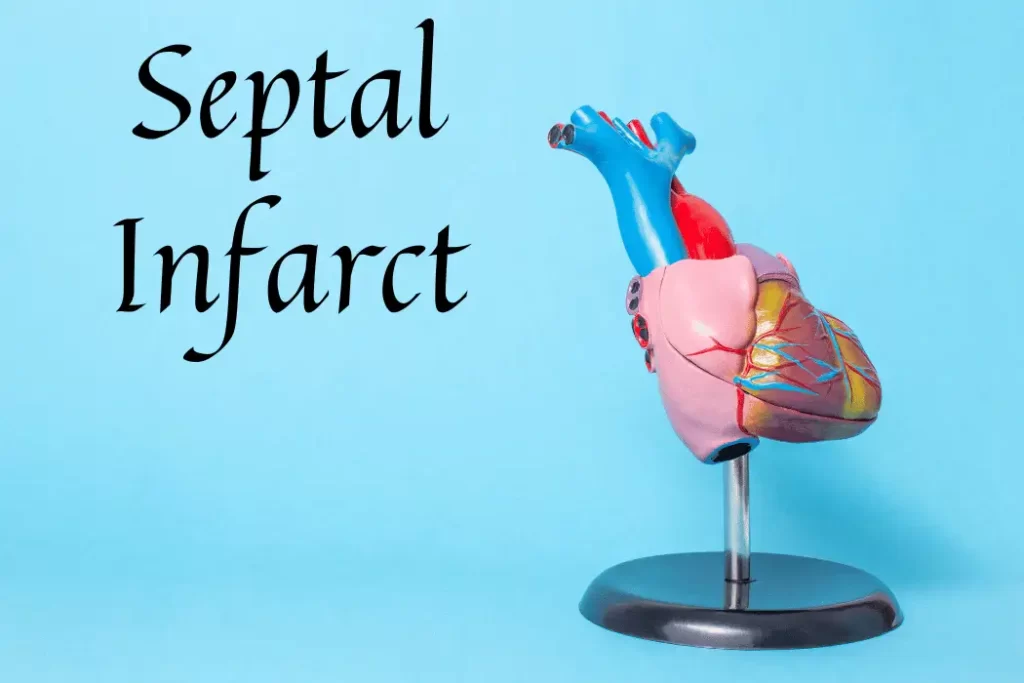When we talk about heart health, it’s easy to focus on the more familiar heart attacks and coronary artery disease. But there’s another, less discussed aspect of cardiac health that deserves attention: septal infarct. While they might not be as well-known as their counterparts, they play a crucial role in the overall well-being of your heart. In this article, we’ll delve into the significance of septal infarct, what they are, how they affect your heart, and what you can do to maintain a healthy heart. So, let’s explore this vital aspect of cardiac health together.
What is a Septal Infarct?
To begin our journey into the world of septal infarct, let’s first understand what they are. A septal infarct is a specific type of heart attack that occurs in the septum, the wall that separates the two lower chambers of the heart, known as the ventricles. When blood flow to this area is disrupted, it can lead to a septal infarct, which can have profound effects on your cardiac health.
The Heart’s Inner Wall
Picture your heart as a fortress, with its inner wall as the protector of harmony. The septum is like the thick, impenetrable wall of this fortress. It’s what ensures that the blood from the left and right ventricles doesn’t mix. When a septal infarct occurs, this wall is breached, and that’s where the trouble begins.
Read more about heart weight here.
The Domino Effect
Much like a falling domino, a septal infarct sets off a chain reaction within your heart. This breach in the septum can lead to abnormal blood flow and disrupt the heart’s intricate coordination. This can result in decreased oxygen supply to the body, putting additional strain on the heart and its neighboring structures.

Types of Septal Infarct
Septal infarct come in various forms, and each type can impact your cardiac health differently. There are three primary types of septal infarct:
1. Anterior Septal Infarct
An anterior septal infarct affects the front part of the septum. This type of infarct can lead to significant heart issues, as it disrupts the flow of blood to the anterior part of the heart.
2. Inferior Septal Infarct
An inferior septal infarct, on the other hand, affects the lower part of the septum. This can cause issues with the inferior section of the heart and may have different symptoms and implications compared to an anterior infarct.
3. Septal Infarct with Right Bundle Branch Block
Sometimes, a septal infarct can also be associated with a right bundle branch block. This condition further complicates matters, affecting the electrical system of the heart and potentially leading to arrhythmias.
Symptoms of Septal Infarct
Now that we’ve covered the basics, let’s discuss the symptoms associated with septal infarcts. Understanding these symptoms is crucial, as early detection can be a game-changer for your cardiac health.
- Shortness of Breath: One of the first signs of a septal infarct is a difficulty in breathing. This occurs because the heart’s ability to pump blood effectively is compromised.
- Chest Pain: Just like in a traditional heart attack, chest pain is a common symptom of a septal infarct. The pain can range from mild discomfort to severe, crushing sensations.
- Fatigue: An unexplained, persistent tiredness can be a sign of cardiac trouble, including a septal infarct. The heart has to work harder when there is insufficient oxygen, leading to fatigue.
- Irregular Heartbeat: The disruption in the heart’s electrical system can cause irregular heartbeats or arrhythmias. This is a concerning symptom that requires immediate medical attention.
Diagnosis and Treatment
If you experience any of these symptoms, it’s vital to seek medical help promptly. A healthcare provider will use various diagnostic tools, such as EKGs, blood tests, and imaging, to confirm the presence of a septal infarct. Once diagnosed, treatment options may include medications to alleviate symptoms, lifestyle changes, and, in severe cases, surgical interventions.
The Importance of Lifestyle Changes
Preventing septal infarct and maintaining a healthy heart often go hand in hand. Simple lifestyle changes can significantly reduce your risk of heart issues, including septal infarct.
- Diet: A heart-healthy diet rich in fruits, vegetables, whole grains, and lean proteins can help keep your heart in top shape.
- Exercise: Regular physical activity is essential for maintaining cardiovascular health. Aim for at least 150 minutes of moderate-intensity exercise each week.
- Smoking Cessation: If you smoke, quitting is one of the best things you can do for your heart. Smoking increases the risk of heart disease significantly.
- Limit Alcohol: Excessive alcohol consumption can harm your heart. Enjoy alcohol in moderation to protect your cardiac health.
- Stress Management: Chronic stress can take a toll on your heart. Find healthy ways to manage stress, such as meditation or yoga.
Conclusion
The significance of septal infarct in cardiac health cannot be overstated. These stealthy adversaries, though often overshadowed by more common heart issues, hold a unique key to our heart’s well-being. Recognizing the signs, understanding the risks, and embracing a heart-healthy lifestyle are all essential in this grand orchestration of life. Just as every instrument contributes to a symphony, so does our heart in the grand composition of our existence. Let’s take care of it, listen to its rhythm, and cherish the melodies it composes, for a harmonious and heart-healthy life is a beautiful and precious symphony indeed.


